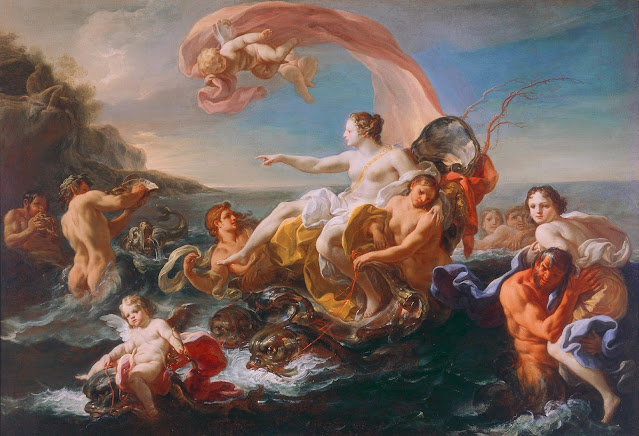 |
| Corrado Giaquinto The Holy Trinity before 1766 oil on canvas Pinacoteca della Città Metropolitana di Bari |
 |
| Corrado Giaquinto The Virgin presenting St Helena and Emperor Constantine to the Holy Trinity 1744 oil on canvas (ceiling painting) Basilica di Santa Croce in Gerusalemme, Rome |
 |
| Corrado Giaquinto Triumph of Joseph before 1766 oil on canvas Pinacoteca della Città Metropolitana di Bari |
 |
| Corrado Giaquinto Triumph of Joseph (detail) before 1766 oil on canvas Pinacoteca della Città Metropolitana di Bari |
 |
| Corrado Giaquinto A Sorceress ca. 1752-54 oil on canvas Pinacoteca Civica Fortunato Duranti, Montefortino |
 |
| Corrado Giaquinto Allegory of Peace and Justice 1753-54 oil on canvas Indianapolis Museum of Art |
 |
| Corrado Giaquinto Autumn ca. 1740-50 oil on canvas National Gallery of Art, Washington DC |
 |
| Corrado Giaquinto St Nicholas of Bari before 1766 oil on canvas Musée Fesch, Ajaccio, Corsica |
 |
| Corrado Giaquinto Martyrdom of St Lawrence before 1766 oil on canvas Musée Fesch, Ajaccio, Corsica |
 |
| Corrado Giaquinto Emperor Theodosius repenting before St Ambrose before 1766 oil on canvas Pinacoteca della Città Metropolitana di Bari |
 |
| Corrado Giaquinto Descent from the Cross ca. 1754 oil on canvas Museo del Prado, Madrid |
 |
| Corrado Giaquinto The Sudarium displayed by Cherubs 1754 oil on canvas Biblioteca Museu Víctor Balaguer, Barcelona |
 |
| Corrado Giaquinto Rest on the Flight into Egypt 1764 oil on canvas Detroit Institute of Arts |
 |
| Corrado Giaquinto Moses and the Serpent of Bronze 1743-44 oil on canvas National Gallery, London |
 |
| Corrado Giaquinto Triumph of Galatea ca. 1752 oil on canvas Milwaukee Art Museum |
"Born in Molfetta, near Bari, Giaquinto trained in Naples and was influenced by the work of Neapolitan painters Luca Giordano and Francesco Solimena. In 1727 he left Naples for Rome, where his style became increasingly classicising. Once his reputation was established, Giaquinto was invited twice to the Savoy court in Turin (in 1733 and 1735-39). In 1740 he became a member of the Academy of Saint Luke in Rome and, having set up a studio he undertook a number of large decorative schemes. In 1753 Giaquinto was summoned by the king of Spain, Ferdinand VI, to Madrid where he succeeded Jacopo Amigoni (1680/2-1752) as court painter. Giaquinto's most significant commission in Madrid was the fresco decoration of the recently-built Royal Palace. In 1762, after nine years at the Spanish court, Giaquinto moved back to Naples where he continued working for the Spanish monarchy until his death."
– from biographical notes at the National Gallery, London